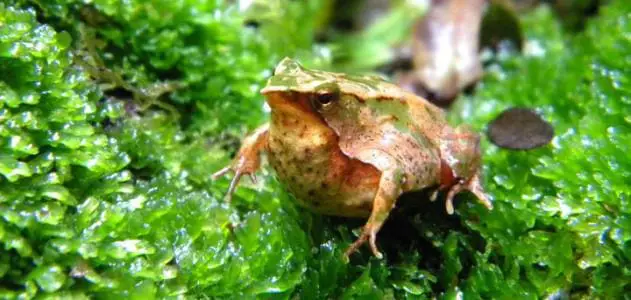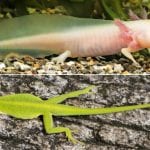If you have an aquarium with pet fishes, then you may be familiar with a condition known as velvet disease. You may see this velvety substance attached to the body of your pet fish, and although this condition is mostly found in fishes, it can also affect amphibians like frogs, toads, and salamanders.
What is velvet disease?
Velvet disease, also known as gold dust disease or rust disease. It can affect all kinds of fishes and amphibians. Velvet is a serious parasitic disease caused by Oodinium pillularism, a dinoflagellate protozoa. Velvet disease is not caused by a fungus as what most pet owners believed.
What are the signs of velvet disease?

Velvet is a severe condition and can lead to serious consequences when this is not addressed early. Your pet can have changed not just in its appearance but also have changes in behavior. If you think that your pet frog, toad or salamander has velvet disease, then you should check for the following symptoms.
- Your pet may rub or scratch the area on its body where there is velvet disease. It may rub against the tank or against a rough surface like a plant or branch to dislodge the parasite.
- The presence of yellow, gold, or rust-colored dust spots or any film on the frog’s body is creating a velvety appearance.
- The velvety specks or spots are usually found along the body, head, and limbs of the frog. Sometimes this condition may be difficult to see. The only way to see this is to keep the room dark and to shine a flashlight on your pet.
- In advanced stages, velvet can affect the respiratory system of frogs causing difficulty in movement and rapid breathing.
- Rapid weight loss and poor appetite.
- In very serious stages, velvet disease can cause the skin of your pet to peel or slough off
How to treat velvet disease?

Velvet disease should be treated right away. It is very contagious but can be controlled if you start the treatment early. Start with the following treatments:
- If your pet frog or salamander has a water feature inside its tank or lives in a water tank, change the water 30% to 50%.
- Always check the water conditions inside the tank and make adjustments as necessary. You should watch out for factors like temperature, pH, ammonia, chlorine, nitrite, and nitrate. You can use a home testing kit or ask the services of a local water testing facility.
- The parasite is hard to treat, and usually, it is vulnerable during the later stages of its life cycle. To encourage the parasite to mature, raise the temperature of the water in the tank to 29 degrees Celsius in 24 hours.
- The velvet parasite is light-dependent, so during the treatment method, power off the lights to kill the parasites. You may also dim the lights if your lamp has this feature.
- When using any medication to kill the parasites, remove an active carbon filter so it won’t remove the medication from the tank. This kind of filter may interfere with the dispersal of the medication in water.
- Place aquarium salts. This is a natural way to stimulate a slim or mucous covering on the skin of aquatic animals, which stops the growth of parasites.
- There are many kinds of treatments for velvet disease, and one of the most trusted is Blue Planet’s Multi-Cure. This treatment has methylene blue, malachite green, and Acriflavine known to treat velvet disease in fish and amphibians. Take note that this treatment will stain everything inside the aquarium or water tank, but this will soon wear off as the tank filter removes the medicine. Follow the instructions on how to use Blue Planet Multi-Cure.
- Consult a vet regarding the treatment of velvet disease, especially for severe velvet disease conditions. An aquatic vet will prescribe an antibiotic to avoid secondary infections. Follow your vet’s prescription at all costs.
How to prevent velvet disease?

The key to surviving velvet disease is to prevent it. You can prevent velvet disease by keeping your tank clean and to keep water inside the tank immaculately clean. Remember the following
· Change water regularly
Keep the tank water clean by changing it regularly. We don’t recommend completely removing the tank water or a complete change because this can stress your pets. You may change 30% to 50% of the dirty water instead.
A good tool to use is an aquarium gravel cleaner to remove velvet off your frogs and also from the bottom of the tank and on the tank accessories. This handy tool will quietly and safely clean aquarium water without moving the tank setup and sand or substrate.
If you must use the old fashioned pail and dipper technique, do so without moving the tank water too much. If you have a small water feature like a dish or basin, remove this from the tank and clean this basin completely. Use hot water and soap but rinse this thoroughly before placing this back in the aquarium or tank and placing water back in.
· Test water regularly
As mentioned, use water testing kits, which are readily available from aquarium supplies shops. Follow the directions on how to use the testing kit properly. If you want professional testing done, take a sample to a local water testing facility.
Treat any problems with the tank water at once. You must not overlook treating water quality problems because this can affect the health of your pets.
· Avoid overcrowding
Never overcrowd your tank. As a rule, if you want to take care of more pets, then get a larger tank. Overcrowding makes it easier for the velvet disease to flourish. If one of your pet frogs contacts this disease, it won’t be long when all the individuals inside the tank are affected. It’s better to keep only a few frogs or toads in separate tanks than keep many in a small crowded tank.
· Observe your pets
Take time to observe your pets. Do so when feeding time because this is the best time to check for your pet’s natural behavior. Check for any velvety growth over the different areas of your pet’s body, including the arms, legs, belly, head, and back. Severe velvet disease may cause the growth of this parasite even in the frog’s mouth.
Aside from their appearance, it is also during feeding time when you can spot unusual behaviors. Frogs that are not eating, have a poor appetite, poor energy, or is sleepy, having trouble breathing and other symptoms could be suffering from velvet disease. If you regularly examine your pets during feeding time, you’ll likely be able to control the spread of velvet disease early on.
· Clean the tank occasionally
Aside from regular water changes, you must also clean your tank completely at least once every month for small tanks and every other month for larger tanks. Occasional cleaning includes removing and replacing the tank water completely, removing, washing, or replacing the substrate. Also, you must remove and clean tank accessories to remove all possible places where the parasite can hide.
Include in your occasional tank cleaning checking and removal of dead leaves and wilting stems if you have natural plants inside the tank. To conclude, clean your tank and everything inside it.
What’s the best tank cleaning solution or product? The best one has to be hot water because this will instantly kill the parasite responsible for velvet disease.
If you want to clean using natural products, use apple cider vinegar and water, lemon juice and water, or baking soda and water. These natural household items will clean the tank and will remove stains and odors as well. But if you want to clean the tank using a cleaning product, be sure to follow instructions on how to use the product and never mix two cleaning products as much as possible.
· Quarantine new and sick pets
If you spot any beginning signs of velvet disease, remove the frog from the enclosure at once and quarantine it. Wash your hands before and after handling your pet. Keep your pet under quarantine for as long as it is showing signs of velvet disease. Treat this individual using the prescribed medication or formula by your vet. But if almost all the frogs in your tank are affected by velvet disease, treat the entire tank.
Aside from quarantining a sick pet, take extra precaution and quarantine new pets too. You’ll never know the tank conditions where the new pet was from, and there may also be other diseases that it may bring to your healthy, clean tank! A good three to four weeks would be enough to check for any diseases and to rule out velvet disease.
· Dim or turn off tank lights at night
As mentioned, the parasite, which is responsible for velvet disease, cannot handle the dark. So, to prevent the parasite from contaminating the entire tank and all the individuals inside it, dim or power off the aquarium lights. After dimming or turning off the lights for a few hours, change at least 50% of the tank water.
Conclusion
Velvet disease is very dangerous and can affect your pet’s health and survival inside a small tank. You must take extra precautions in removing velvet disease and to prevent this from happening. Tank cleanliness is essential as well as avoiding overcrowding. With good tank maintenance and a keen eye on your pets’ health and wellness, it is possible to completely avoid velvet disease. Consult your vet for any signs of velvet disease on your pet.



